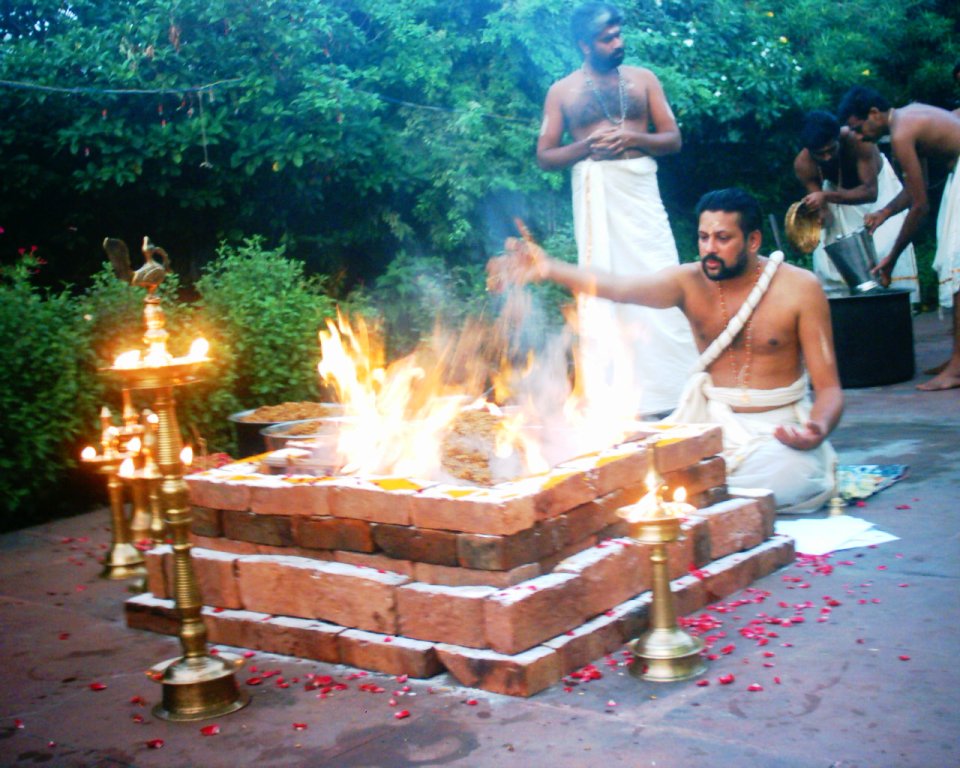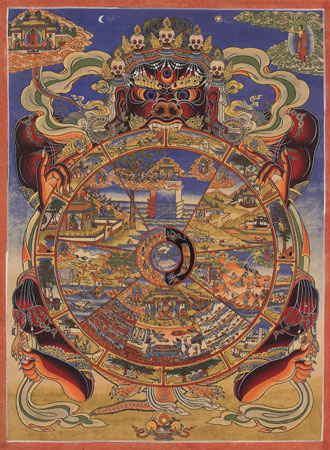|
Jambhala
Jambhala, also known as Dzambhala, Dzambala, Zambala or Jambala, is the Buddhist deity of fortune and wealth and a member of the Jewel Family . He is sometimes equated with the Hindu deity Kubera. Jambhala is also believed to be an emanation of Avalokitesvara or Chenrezig, the Bodhisattva of Compassion. There are five different wealth Jambhalas; each has his own practice and mantra to help eliminate poverty and create financial stability.Nepalese and Tibetan Arts Blog. Access date= June 3rd, 2013Five Jambala (Dzambhala) and Mantra. Gyalten Sogdzin Rinpoche said that Jambhala is the protector of all Lineage (Buddhism), Lineages and of all sentient beings from all sickness and difficulties. Jambhala is a Bodhisattva of material and spiritual wealth as well as many other things, especially of granting financial stability. Etymology ''Dzam'' means "deity or gathering." ''Bhah'' means "gold or wealth." ''La'' means "to honor". ''Dzambhala'' means “Precious golden deity who gathers ... [...More Info...] [...Related Items...] OR: [Wikipedia] [Google] [Baidu] [Amazon] |
Kubera
Kubera (, ) also known as Kuvera, Kuber and Kuberan, is the god of wealth, and the god-king of the semi-divine yakshas in Hinduism. He is regarded as Guardians of the directions, the regent of the north (''Dikpala''), and a protector of the world (''Lokapala''). His many epithets extol him as the overlord of numerous semi-divine species, and the owner of the treasures of the world. Kubera is often depicted with a plump body, adorned with jewels, and carrying a money-pot and a club. Originally described as the chief of evil spirits in Veda, Vedic-era texts, Kubera acquired the status of a ''Deva (Hinduism), deva'' (god) only in the Puranas, ''Purana''s and the Hindu epics. The scriptures describe that Kubera once ruled Lanka, but was overthrown by his half-brother Ravana, later settling in the city of Alaka in the Himalayas. Descriptions of the "glory" and "splendour" of Kubera's city are found in many scriptures. Kubera has also been assimilated into the Buddhist and Jain pa ... [...More Info...] [...Related Items...] OR: [Wikipedia] [Google] [Baidu] [Amazon] |
Ratnasambhava
Ratnasambhava (, lit. "Jewel-Born") is one of the Five Dhyani Buddhas (or "Five Meditation Buddhas") of Mahayana and Vajrayana or Tantric Buddhism. Ratnasambhava's mandalas and mantras focus on developing equanimity and equality and, in Vajrayana Buddhist thought is associated with the attempt to destroy greed and pride. His consort is Mamaki and his mount is a horse or a pair of lions. Textual History The first documented mention of Ratnasambhava is found in the '' Suvarṇaprabhāsa Sūtra'' and in the Guhyasamāja Tantra (4th Century CE), and he subsequently appears in a number of Vajrayana texts. The most elaborate account of him is to be found in the ''Pañcakara'' section of the ''Advayavajrasaṃgraha.'' In the Śūraṅgama mantra ( Chinese: 楞嚴咒; pinyin: ''Léngyán Zhòu'') taught in the Śūraṅgama sutra ( Chinese: 楞嚴經; pinyin: ''Léngyán Jīng''), an especially influential dharani in the Chinese Chan tradition, Ratnasambhava is mentioned to be the h ... [...More Info...] [...Related Items...] OR: [Wikipedia] [Google] [Baidu] [Amazon] |
Bodhisattva
In Buddhism, a bodhisattva is a person who has attained, or is striving towards, '' bodhi'' ('awakening', 'enlightenment') or Buddhahood. Often, the term specifically refers to a person who forgoes or delays personal nirvana or ''bodhi'' in order to compassionately help other individuals reach Buddhahood. In the Early Buddhist schools, as well as modern Theravāda Buddhism, bodhisattva (or bodhisatta) refers to someone who has made a resolution to become a Buddha and has also received a confirmation or prediction from a living Buddha that this will come to pass. In Theravāda Buddhism, the bodhisattva is mainly seen as an exceptional and rare individual. Only a few select individuals are ultimately able to become bodhisattvas, such as Maitreya. In Mahāyāna Buddhism, a bodhisattva refers to anyone who has generated '' bodhicitta'', a spontaneous wish and compassionate mind to attain Buddhahood for the benefit of all sentient beings. Mahayana bodhisattvas are spiritua ... [...More Info...] [...Related Items...] OR: [Wikipedia] [Google] [Baidu] [Amazon] |
Hindu
Hindus (; ; also known as Sanātanīs) are people who religiously adhere to Hinduism, also known by its endonym Sanātana Dharma. Jeffery D. Long (2007), A Vision for Hinduism, IB Tauris, , pp. 35–37 Historically, the term has also been used as a geographical, cultural, and later religious identifier for people living in the Indian subcontinent. It is assumed that the term ''"Hindu"'' traces back to Avestan scripture Vendidad which refers to land of seven rivers as Hapta Hendu which itself is a cognate to Sanskrit term ''Sapta Sindhuḥ''. (The term ''Sapta Sindhuḥ'' is mentioned in Rig Veda and refers to a North western Indian region of seven rivers and to India as a whole.) The Greek cognates of the same terms are "''Indus''" (for the river) and "''India''" (for the land of the river). Likewise the Hebrew cognate ''hōd-dū'' refers to India mentioned in Hebrew BibleEsther 1:1. The term "''Hindu''" also implied a geographic, ethnic or cultural identifier for ... [...More Info...] [...Related Items...] OR: [Wikipedia] [Google] [Baidu] [Amazon] |
Nectar
Nectar is a viscous, sugar-rich liquid produced by Plant, plants in glands called nectaries, either within the flowers with which it attracts pollination, pollinating animals, or by extrafloral nectaries, which provide a nutrient source to animal Mutualism (biology), mutualists, which in turn provide plant defense against herbivory#Indirect defenses, herbivore protection. Common nectar-consuming pollinators include mosquitoes, hoverfly, hoverflies, wasps, bees, butterfly, butterflies and moths, hummingbirds, honeyeaters and Bat#Fruit and nectar, bats. Nectar is an economically important substance as it is the sugar source for honey. It is also useful in agriculture and horticulture because the adult stages of some predatory insects feed on nectar. For example, a number of predacious or Parasitoid wasp, parasitoid wasps (e.g., the social wasp species ''Apoica flavissima'') rely on nectar as a primary food source. In turn, these wasps then hunt agricultural pest insects as food ... [...More Info...] [...Related Items...] OR: [Wikipedia] [Google] [Baidu] [Amazon] |
Cakra
A chakra (; ; ) is one of the various focal points used in a variety of ancient meditation practices, collectively denominated as Tantra, part of the inner traditions of Hinduism and Buddhism. The concept of the chakra arose in Hinduism. Beliefs differ between the Indian religions: Buddhist texts mention four or five chakras, while Hindu sources often have six or seven. The modern "Western chakra system" arose from multiple sources, starting in the 1880s with H. P. Blavatsky and other Theosophists, followed by Sir John Woodroffe's 1919 book ''The Serpent Power'', and Charles W. Leadbeater's 1927 book ''The Chakras''. Psychological and other attributes, rainbow colours, and a wide range of correspondences with other systems such as alchemy, astrology, gemstones, homeopathy, Kabbalah and Tarot were added later. Etymology Lexically, ''chakra'' is the Indic reflex of an ancestral Indo-European languages, Indo-European form ''*kʷékʷlos'', whence also "wheel" and "cycl ... [...More Info...] [...Related Items...] OR: [Wikipedia] [Google] [Baidu] [Amazon] |
Vajrasattva
Vajrasattva (, Tibetan: རྡོ་རྗེ་སེམས་དཔའ། ''Dorje Sempa'', short form: རྡོར་སེམས། ''Dorsem'') is a bodhisattva in the Mahayana and Mantrayana/Vajrayana Buddhist traditions. In Chinese Buddhism and the Japanese Shingon tradition, Vajrasattva is the esoteric aspect of the bodhisattva Samantabhadra and is commonly associated with the student practitioner who, through the master's teachings, attains an ever-enriching, subtle and rarefied grounding in their esoteric practice. In the East Asian esoteric Buddhist Diamond Realm Mandala, Vajrasattva sits to the East near Akshobhya Buddha. In some esoteric lineages, Nagarjuna was said to have met Vajrasattva in an iron tower in South India, and was taught tantra, thus transmitting the esoteric teachings to more historical figures. In Tibetan Buddhism, Vajrasattva is associated with the sambhogakāya and with purification practice. Vajrasattva appears in various Buddhist texts, inc ... [...More Info...] [...Related Items...] OR: [Wikipedia] [Google] [Baidu] [Amazon] |
Buddha
Siddhartha Gautama, most commonly referred to as the Buddha (),* * * was a wandering ascetic and religious teacher who lived in South Asia during the 6th or 5th century BCE and founded Buddhism. According to Buddhist legends, he was born in Lumbini, in what is now Nepal, to royal parents of the Shakya clan, but renounced his home life to live as a wandering ascetic. After leading a life of mendicancy, asceticism, and meditation, he attained nirvana at Bodh Gayā in what is now India. The Buddha then wandered through the lower Indo-Gangetic Plain, teaching and building a monastic order. Buddhist tradition holds he died in Kushinagar and reached ''parinirvana'' ("final release from conditioned existence"). According to Buddhist tradition, the Buddha taught a Middle Way between sensual indulgence and severe asceticism, leading to freedom from ignorance, craving, rebirth, and suffering. His core teachings are summarized in the Four Noble Truths and the Noble Ei ... [...More Info...] [...Related Items...] OR: [Wikipedia] [Google] [Baidu] [Amazon] |
Lotus Sutra
The ''Lotus Sūtra'' (Sanskrit: ''Saddharma Puṇḍarīka Sūtram'', ''Sūtra on the White Lotus of the True Dharma'', zh, p=Fǎhuá jīng, l=Dharma Flower Sutra) is one of the most influential and venerated Buddhist Mahāyāna sūtras. It is the main scripture on which the Tiantai along with its derivative schools, the Japanese Tendai and Nichiren, Korean Cheontae, and Vietnamese Thiên Thai schools of Buddhism were established. It is also influential for other East Asian Buddhist schools, such as Zen. According to the British Buddhologist Paul Williams, "For many Buddhists in East Asia since early times, the ''Lotus Sūtra'' contains the final teaching of Shakyamuni Buddha—complete and sufficient for salvation." The American Buddhologist Donald S. Lopez Jr. writes that the ''Lotus Sūtra'' "is arguably the most famous of all Buddhist texts," presenting "a radical re-vision of both the Buddhist path and of the person of the Buddha." Two central teachings ... [...More Info...] [...Related Items...] OR: [Wikipedia] [Google] [Baidu] [Amazon] |
Six Realms
The Six Paths in Buddhist cosmology are the six worlds where sentient beings are reincarnated based on their karma, which is linked to their actions in previous lives. These paths are depicted in the '' Bhavacakra'' ("wheel of existence"). The six paths are: # the world of gods or celestial beings ( ''deva'') # the world of human beings ( ''manushya'') # the world of warlike demigods ('' asura'') # the world of animals ('' tiryagyoni'') # the world of hungry ghosts ('' preta'') # the world of Hell ('' naraka'') The first three paths are known as "the three benevolent destinies" (''kuśalagati''), where beings experience varying degrees of virtue, pleasure, and pain. The last three paths are referred to as the three unbenevolent destinies (''akuśalagati''), where beings lack virtue and suffer predominantly. Typically, we as human beings only perceive the animals around us. The first Buddhist texts mention only five paths without distinguishing between the paths of ''deva'' and ... [...More Info...] [...Related Items...] OR: [Wikipedia] [Google] [Baidu] [Amazon] |








